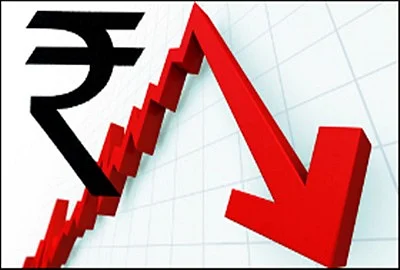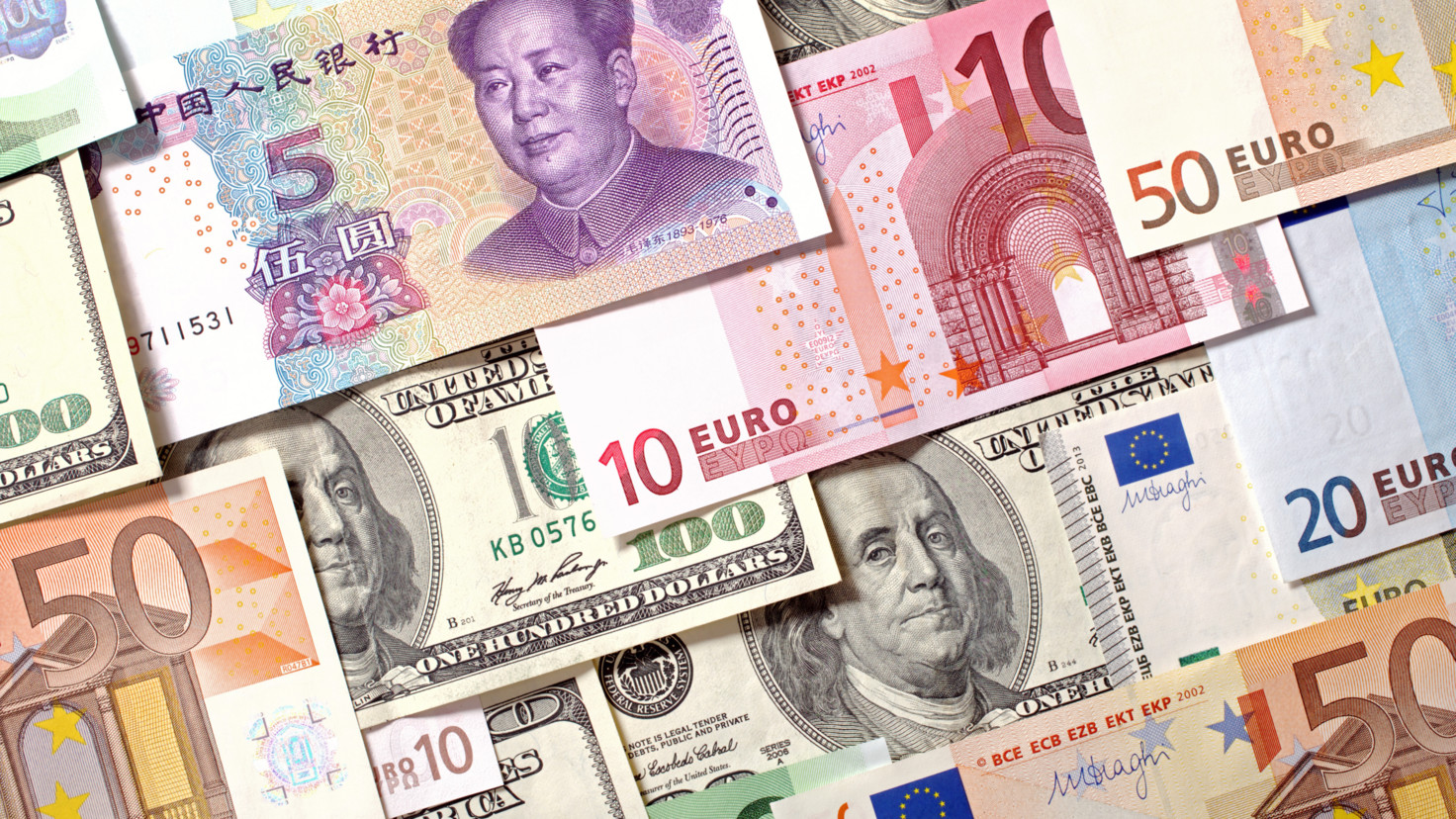Rupee fell to 77.44 against Dollar

The Indian Rupee depreciates as compared with the US dollars.
On Thursday, Moody’s Investors Service stated that most rated firms in India have buffers to withstand a further 10 – 15% Currency Depreciation of the Rupee.
The India Rupee was weakened by 6 Paisa. This means that our Currency gets depreciated by 6 Paisa.
The Indian Rupee fell to an all-time low of 77.44 against the US Dollars.
In the statement by Moody’s Investors Service, it is also mentioned that in 2022 the Rupee is depreciated by 4.5%.

Before moving ahead, it is important for us to first understand the concept of Currency Depreciation. So let’s have a deep insight into the Concept of Currency Depreciation.
To understand Currency Depreciation, we also need to understand some related terminology.
Every country has its currency. E.g., India had Rupees, the United States had Dollars, and China had Yuan. These foreign currencies are known as Foreign Currencies.
Currency Depreciation and Currency Appreciation.
The rate at which the domestic currency can be exchanged for a foreign currency is known as Foreign Exchange Rate. It is the price paid in domestic currency for buying a unit of foreign currency.
Now, Let’s come on to the Currency Depreciation. Currency Depreciation is a fall in the value of a currency in a floating exchange rate system. It makes currency less valuable, and more of it will be required to buy Foreign Currency.
Now let’s understand Currency Depreciation through two cases :
In the first case, Let’s Suppose the Previous value of the Indian 1 Rupee is $70. Now the value has changed to $77.
You can note that there is an increase in the value of US Dollars while there is a decrease in the Indian Rupee. This decrease in the value of the Indian Rupee (domestic Currency) is known as the Currency Depreciation.
Now let’s go deeper. When the value of 1 rupee changes from $70 to $77, this implies that the Indian Rupee gets weaker compared to the US Dollars. This Depreciation of Currency is not an appropriate situation.
This situation is inappropriate because Now, for $1, Indians have to have a much greater amount than the previous ones.
In the second case, let’s suppose that the previous value of 1 Indian rupee was $77, and Now the value has changed to $70.
In this case, there is an increase in the value of the Indian Rupee, while a decrease in the US dollars can be seen. This increase in the value of the Indian Rupee (domestic Currency) is known as Currency Appreciation.
When the value of the Indian Rupee changed from $77 to $70, it indicated that the value of the Indian rupee increases while the value of the US dollar decreases. This is an appropriate Situation for the country.
As of now, for $1, Indians just have to pay $70, which is much less than the amount paid previously. Because of this, this condition is a well and an appropriate situation.
Effect of Currency Depreciation:-
When a currency is depreciated, both positive, as well as negative effects, can be seen. Because of this, we can also call Currency Depreciation a two-handed – Sword.
Let’s First look at the Positive Effects of Currency Depreciation on the Indian Rupee.
Exports Increases ;
The Positive key effect which can be seen in the Currency Depreciation is that Our Exports Increase when there is a situation of Depreciated Rupee.
When the domestic currency (Rupee) depreciates, the foreign demand for domestic goods and services will also increase. This Foreign demand will lead to an increase in the supply of domestic goods and services.
The Foreign demand increases because when our Indian Rupee Depreciates, the foreign individuals spending portion gets increased as through this, they will be able to afford more. In other words, we can say that the Depression of the Rupee will create an illusion of an increase in income for foreign individuals.
However, a drastic negative impact is also seen when Currency is Depreciated.
The key and the significant Negative impact of Currency Depreciation is that our Imports Decrease. This is indeed a drastic Effect because the ratio of Indian Imports is greater than the Exports.
When the value of the domestic currency is Depreciated from $70 to $77, our Imports decrease as domestic demand for the foreign currency decreases. This will lead to a decrease in the supply of foreign goods and services.
This happened because the Foreign goods and services were relatively Expensive than the previous value. In other words, we can say that it creates an illusion in which the income of the domestic people becomes relatively lower.
Effect of Currency Appreciation:
When the Domestic currency gets appreciated, again, two effects can be seen; Positive and Negative.
Let’s start with Positive Effect
Import Increases ;
When there is a situation of currency appreciation, a reverse effect can be seen as compared with Currency Depreciation.
Here, in currency, Depreciation Import increases.
When the currency changed from $77 to $70, the domestic demand for foreign goods and services increased, and the supply of foreign goods and services also increased.
This increase happens because currency appreciates. After all, foreign goods and services become relatively cheaper compared with the previous value and hence will increase the supply and demand of foreign currency.
Let’s have a look at the Negative Effect ;
Export Decreases
The major negative effect is that the Export Decreases when there is a situation of Currency Appreciation.
The export will decrease because there will be low demand for domestic goods and services for the foreign individuals as for the foreign individuals, and the domestic goods and services will become relatively Expensive for them. At work, it will create an illusion of low income for foreign individuals.
Why Rupee is the Falling against the dollars?
There are various connected reasons behind the slump ;
The Indian Rupee has slipped to its lowest level of 77.5 to the Dollar. This is the first time that it has gone past the 77 per dollar mark.
One Must Remember that all this is a global issue and not just limited to India, as all Asian currencies have slipped against the dollar.
Now, this is led by the UN Chinese currencies, which are at the lowest level since 2020, which is dragging down the other currencies like Thailand Bath, the Philippines Peso, South Africa Iran, the Indonesian Rupee, and all of them are Depreciating too.
This is because the US dollar is constantly rising. Higher US yields are pushing the US dollar higher, which is together creating a message of risk-off in the riskier assets in emerging markets like India.
A combination of low foreign funds in India with a rising requirement is pushing the Rupee down. Indian markets have witnessed the highest ever recorded foreign fund out this year, with 17.7 billion US dollars being withdrawn in just a little over four months.
Foreign investors have remained sellers in the Indian markets and have withdrawn money for each of the last seven months.
Foreign Investors have remained net sellers in the markets and have withdrawn money for each of the last seven months.
The war in Ukraine continued for the third month, and Lockdowns in China were followed by soaring inflation. Rate hikes across countries are all factors pushing investors back to safe investing destinations such as the United States. The uncertain environment has turned investors to US dollars, which are considered a reserve and a safe currency in times of global stress.
Soaring demand has taken the dollar to a two-decade high, further pressurizing the Rupee’s value.
The Indian Rupee is also more vulnerable than the other currencies, and that is due to higher crude oil prices as India is one of the highest importers of crude oil.
A 15 per cent increase in the price of Brent crude oil has further resulted in foreign currency outflows in terms of import payments.
How does Rupee Depreciation Affect the Commoner’s Life?
Apart from impacting markets, the Rupees Depreciation drives up the cost of living, which affects the prices of essential goods for the common Man.
When the Rupee Depreciates, everything we import gets more expensive. As for 1$ with products we now have to pay more in rupees.
Already soaring crude oil prices will now translate into even larger payments in rupees in terms of increasing oil import prices further translate into higher domestic fuel prices, which have a cascading impact on overall inflation.
A higher cost of transportation, in turn, pushes up the prices of all essential products.
Along with this, the cost of foreign studies and foreign travel also increases with the rupees worth reducing.
But there is an upside too. Indian Exports now get more competitive as foreign importers now have to pay less in terms of their currencies.
With no sign of global supply disturbing easing amid the war, the pressure on the Rupee is expected to continue. This will hurt the common man who is already struggling with price rises across the commodities.
Should we worry?
MD, Kotak Mahindra Assets, Mr. Nilesh Shah had stated that the Rupee appreciated 13 and a half per cent against Yen last year, Rupee had appreciated 9 per cent against Gross Domestic Product last year, Rupee had similarly appreciated against Euro. So Rupee is actually on an appreciation move.
While FX reserves have fallen, India is one of the few countries in the world where FX reserves are still higher than its fixed debt. While inflation is high in India, it is a rare period in India’s history where Indian inflation is lower than American inflation. While growth is coming down in India, it is still the second year that India has been running the fastest major economy in the world.
Although we can’t be complacent as we are in a very uncertain world where the Russia – Ukraine situation can pull oil prices higher.
A 10% rise in crude means a 20 basis point drop in our Gross Domestic Product (GDP) 40 basis point increase in our inflation, so while we are better off compared to many other countries, we can’t afford to be Complacent.
We see across our neighbourhood how many economic policies can create disasters like Pakistan and Sri Lanka. All these are examples of bad economic policies. So we need to be concerned undoubtedly.
Edited by Prakriti Arora









